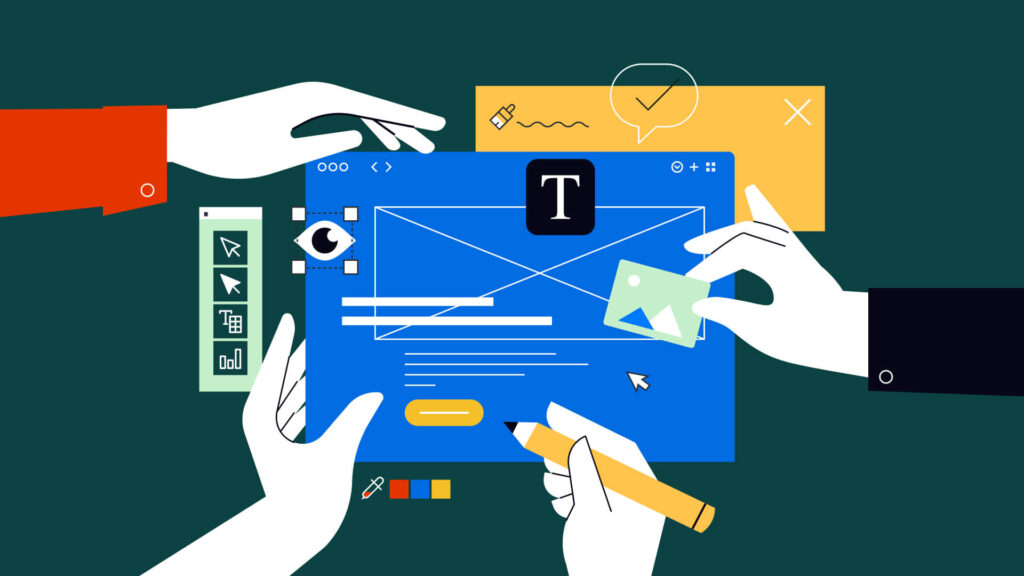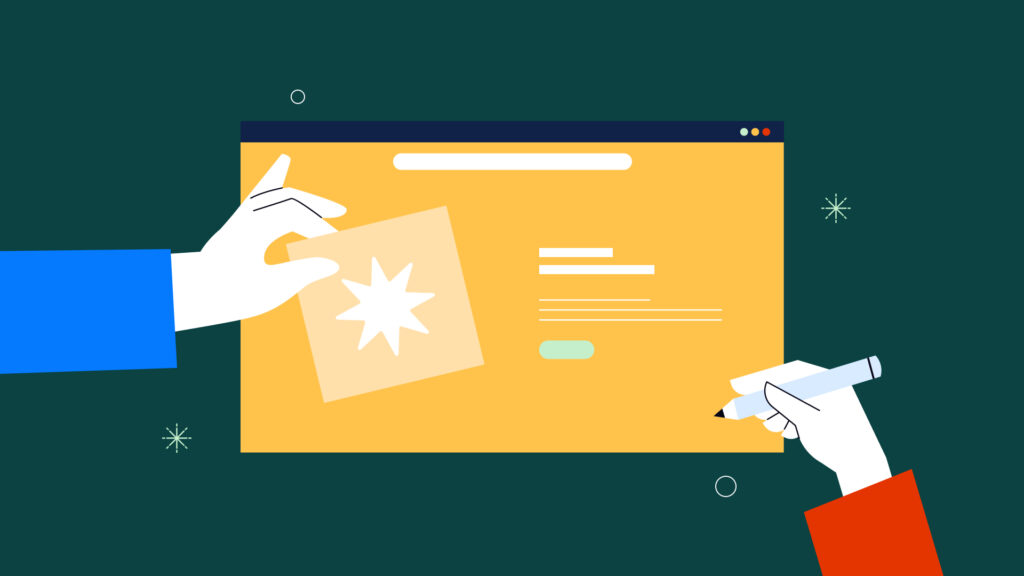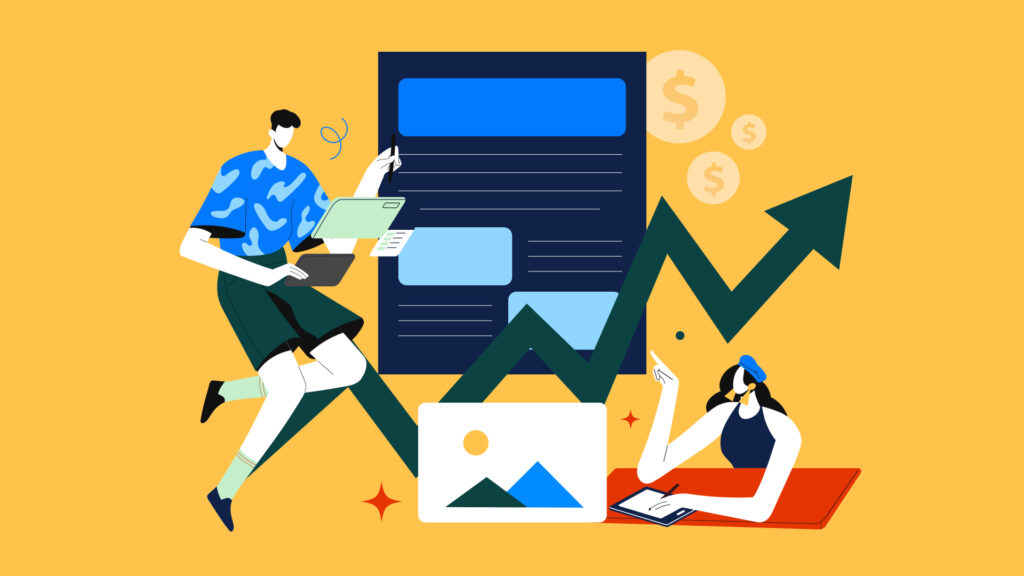Every great brand starts with a spark
Nowadays, finding reliable design inspiration is both more challenging and more rewarding than ever. As a marketing or creative leader, you’re not just chasing trends. You’re shaping the visual and emotional DNA of your brand, navigating AI-accelerated change, and striving to stand out in a saturated digital landscape.
But let’s be honest: even the best creative teams hit dry spells. So how do you move from “stuck” to a breakthrough? The answer isn’t just to scroll Pinterest or steal what’s trending. It’s to start with your audience, market, and unique business problem—then hunt inspiration with purpose, blending online libraries, offline fieldwork, competitive insight, and trend intelligence. This guide distills the latest expert workflows and tools, ensuring your next creative leap isn’t just stylish, but strategic and impactful.
Whether you’re a marketing manager, creative director, or brand builder, here’s your updated roadmap for unlocking design inspiration in 2025.
Why design inspiration still matters in 2025
Inspiration isn’t about copying; it’s about seeing patterns, spotting white space, and making smarter creative choices. In 2025, the creative landscape is shaped by AI-accelerated exploration, the rise of retro-futurist aesthetics, and a powerful demand for more human, authentic experiences.
With so many brands vying for attention across digital touchpoints, design inspiration is the engine that drives differentiation, recall, and emotional connection. But trends are inputs, not mandates. The most successful brands use inspiration to fuel original ideas, not to mimic what’s already viral.
For example, brands like Glossier and Duolingo have built cult followings by blending digital-first design with playful, human-centric elements, proving that inspiration, when grounded in strategy, can deliver both “wow” and business value.
Start with audience, market, and problem framing
Before you start moodboarding, color-picking, or brainstorming wild logo concepts, pause. The most successful brands in 2025 don’t begin with aesthetics; they start with audience, market, and problem framing. This foundational step ensures your creative inspiration solves real needs, resonates deeply, and stands out for the right reasons.
Step 1: Know your target audience (before you moodboard)
It’s tempting to assume your own taste aligns with your audience’s. But even if you fit their demographics, your motivations and journey are different. To truly inspire, get granular:
- Document jobs-to-be-done: What are your users trying to accomplish with your brand? What pain points or anxieties are you solving?
- Surface triggers and context: What sparks action? Where and how will your audience encounter your brand; on a mobile device, at a retail shelf, in a dark UI, or across cultures?
- Map language and cultural comfort zones: What visuals, idioms, or references feel familiar or aspirational to your audience?
As the Nielsen Norman Group advises for 2025, “re-center on user value and deeper skills; not just toolkits.” Move beyond assumptions by creating research artifacts: personas, journey maps, and tone-of-voice frameworks.
Quick Exercise:
Write three one-sentence positioning statements for three different customer sub-segments. If the visuals you’d use don’t shift meaningfully between them, your segmentation needs refinement.
Step 2: Competitor & comparator scans: steal like a strategist
Don’t just look at your direct competitors; scan comparators, too (brands solving similar problems in adjacent industries). This expands your inspiration pool and reveals both overused tropes and untapped opportunities.
As you review, log:
- Visual tropes: What colors, typefaces, shapes, or illustration styles are typical?
- Narrative frames: Which stories are brands telling: innovation, safety, joy, mastery?
- UX conventions: How do they structure navigation, forms, pricing tables, or onboarding flows?
Use “living libraries” to fuel this process:
- Brand New: For daily real-world identity critiques.
- Mobbin, Pageflows: UI/UX patterns and end-to-end journeys.
- Land-Book: Landing page inspiration and emerging UI treatments.
- Fonts In Use: Typography in real-world contexts, searchable by industry. Here’s also a quick guide on how to choose your brand typography.
👉 Design Force Tip:
Tag screenshots or references not just by style, but by intent (“trust builder,” “premium signal,” “speed cue”). This keeps your inspiration strategic; focused on solving your audience’s problem, not just chasing trends.
Step 3: Deepen your industry understanding
Talk to 3–5 power users or teammates who regularly engage with customers. Distill insights such as:
- Category must-haves vs. nice-to-haves: What is essential, and what’s just “nice”?
- Regulatory/accessibility constraints: Are there legal or usability boundaries you must respect?
- Shelf/market realities: Does your design need to pop on a crowded shelf or work in multiple digital formats?
Next, scan 2025 trend lenses to decide what’s relevant for your brand:
- AI-powered exploration and personalization: Use tools like Midjourney or Adobe Firefly to generate diverse moodboards or logo directions quickly, but always sense-check against your audience’s actual needs.

- Human, community-centric branding: As a counterbalance to AI, infuse your brand with authentic, real-world connection.
- Immersive and retrofuturist experiences: Consider hybrid digital-physical touchpoints, pop-ups, or AR; if they align with your brand’s story.
Bonus Exercise:
Try this “AI-assisted ideation” workflow:
- Prompt trios: Feed your AI tool a combination of brand goal + audience mood + a key constraint (“eco-friendly,” “AA contrast,” “works at 3m”).
- Diverge in batches: Generate 5–7 visual territories, focusing on one axis at a time (color, type, imagery).
- Converge with evidence: Annotate each board with why it serves user value, not just aesthetics.
- De-trend pass: Remove anything that feels overdone unless it truly supports your unique positioning.
👉 Design Force tip:
Always document your sources and inspirations, avoid copying unique combinations, and run accessibility checks early, saving time and ensuring inclusivity.
Hunt inspiration: online, offline, competitive, and trend sources
Once your audience and problem are clear, it’s time to hunt for creative inspiration with intent. The 2025 approach is holistic: blend digital libraries, real-world fieldwork, competitor analysis, and trend forecasting.
Online Inspiration Hubs:
Platforms like Behance, Dribbble, Awwwards, Land-Book, and Fonts In Use let you filter by 2025 trends, industry, or interaction pattern—great for moodboarding or UI/UX references. For identity critiques, Brand New offers daily real-world analysis.
Offline & Analog Fieldwork:
Don’t underestimate the power of the tangible: photograph retail shelves, collect packaging, study signage, or flip through magazines. According to ELLE’s 2025 Interior Trends, warm naturals and high-gloss finishes are spilling over into brand worlds; sometimes, the best ideas come from outside your category.

Competitive & Adjacent Scanning:
Look beyond direct rivals. Analyze brands solving similar problems in other industries. Tools like Mobbin and Pageflows offer UI patterns and customer journey flows. Tag what you find by intent: ask yourself, does this element build trust, signal premium, or cue speed?
Trend Intelligence:
Stay ahead by following Adobe Creative Trends, LogoLounge’s Trend Report, and Pinterest Predicts. Use these as raw inputs, not templates.
AI Moodboards & Versioning:
Leverage AI tools (like Midjourney, DALL-E, Adobe Firefly, Nano Banana) to rapidly generate visual directions; then validate with real users for fit and appeal.
Synthesize & build: turning inspiration into brand action
Inspiration is only powerful if you turn it into a cohesive, feasible, and accessible brand system. In 2025, the mantra is: accessibility, inclusivity, and feasibility; so your inspiration ships, not just “wows”.
Modern Workflow:
- Discovery: Interview stakeholders, create user/job hypotheses, scan competitors and comparators, then build an inspiration wall tagged by intent.
- Exploration: Go wide with moodboarding (digital, analog, and AI), explore 3–5 visual territories, and get quick user feedback.
- Definition: Translate inspiration into identity core (logos, lockups), choose type pairings (Fonts In Use), set colors with accessibility in mind, and prototype in situ (on sites, ads, packaging).
- Validation: Run lightweight tests (copy, color, layout), iterate, and ship an MVP brand kit.
Guardrails: Always document your sources, avoid copying unique compositions, and run accessibility checks early.
A great example: Spotify’s evolving identity system; rooted in research, shaped by iterative prototyping, and always referencing both digital and analog inspiration sources.

10+ places to find brand, design & creative inspiration in 2025
Need a jumpstart? Here are some top sources; each with a unique lens:
- Brand New (UnderConsideration): Daily identity critiques and year-in-review roundups.
- Mobbin: UI/UX patterns and mobile/web flows.
- Pageflows: End-to-end user journeys.
- Land-Book: Landing page and UI inspiration.
- Awwwards: Award-winning web design.
- Behance: Curated creative portfolios and 2025 trend galleries.
- Dribbble: Trending design tags and case studies.
- Fonts In Use: Real-world type pairings by industry.
- Typewolf: Font pairing ideas and reviews.
- LogoLounge: Logo trends and annual reports.
- Pinterest Predicts: Search behavior-based creative signals.
- ELLE: Interior and material trends.
- The Branding Journal: Branding case studies and forecasts.
- Adobe 2025 Trends: Industry-wide creative direction.
For each, ask: How does this source help you spot patterns, challenge assumptions, or spark new solutions for your brand?
In the fast-paced world of 2025, design inspiration is less about chasing the new and more about aligning with your audience, market, and authentic brand story. Start with deep research, hunt inspiration broadly and strategically, synthesize with accessibility and feasibility in mind, and turn creative sparks into real, shippable brand assets.
Ready to take your brand to the next level with inspired, strategic design?
Explore our work portfolio, get inspired, and see how we’ve helped companies of all sizes build memorable brands, launch standout campaigns, and solve real business challenges.
At Design Force, we offer flexible design subscriptions that give you access to a dedicated team of world-class designers on demand, fast, collaborative, and always tailored to your creative needs. Learn more about our services and process, and discover how we can help your brand.



